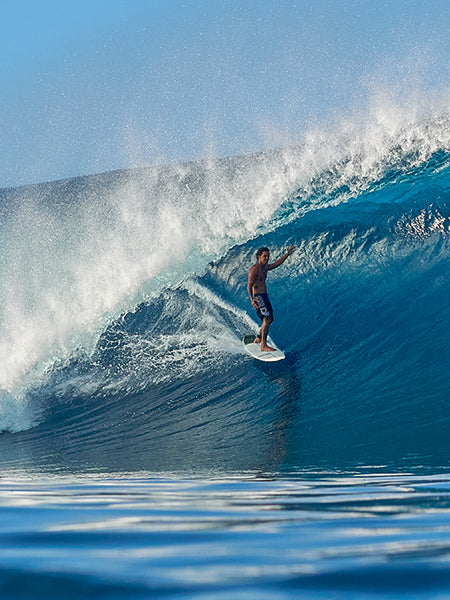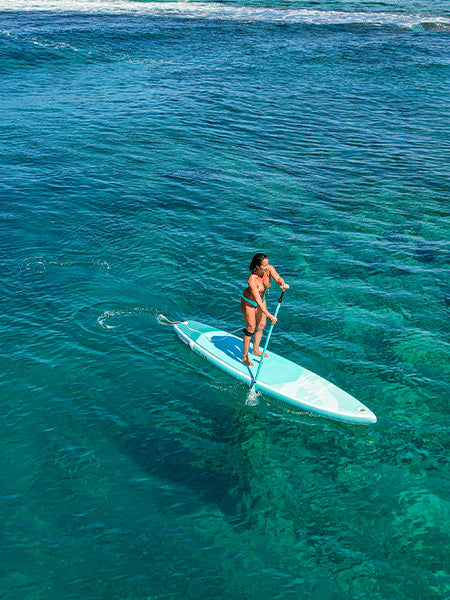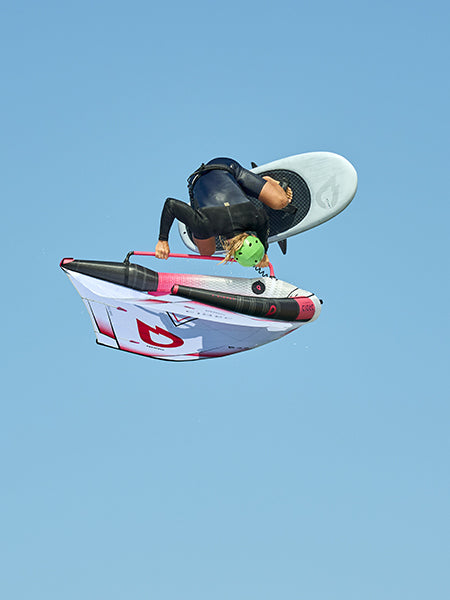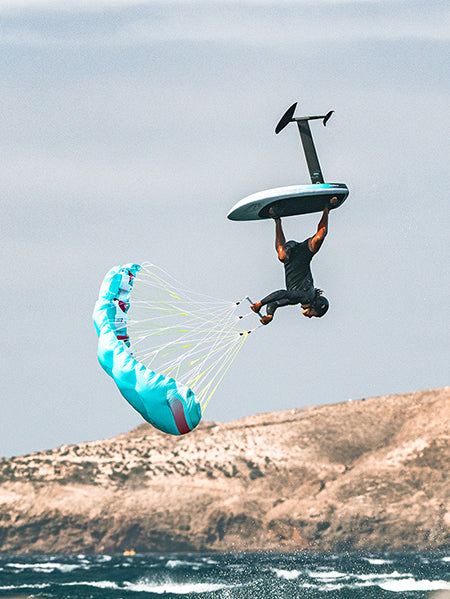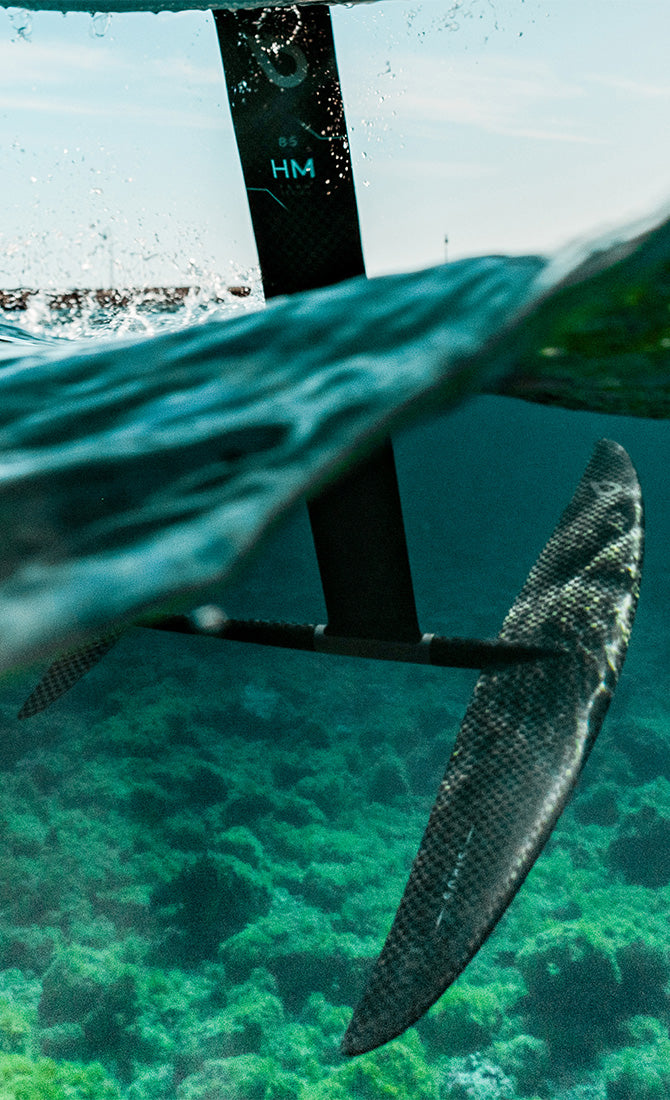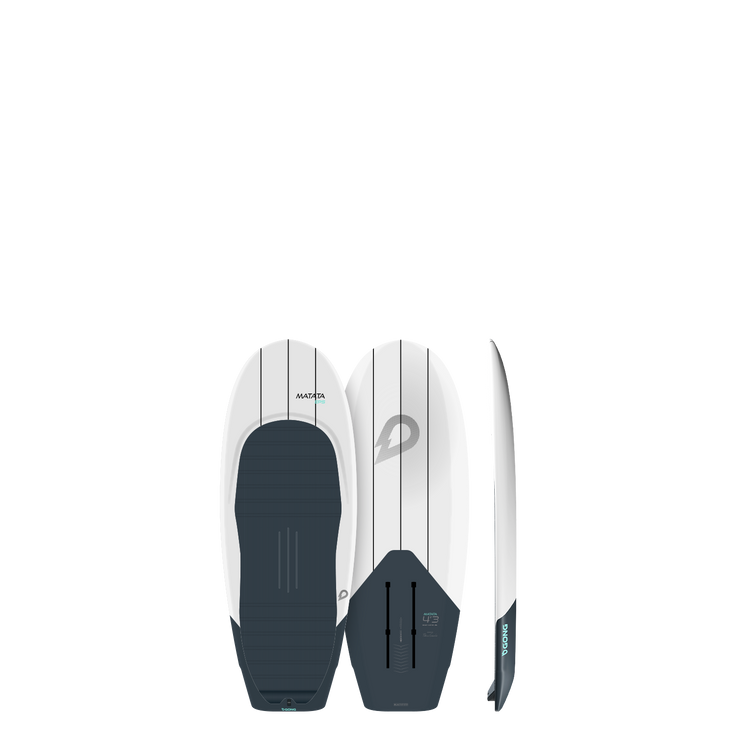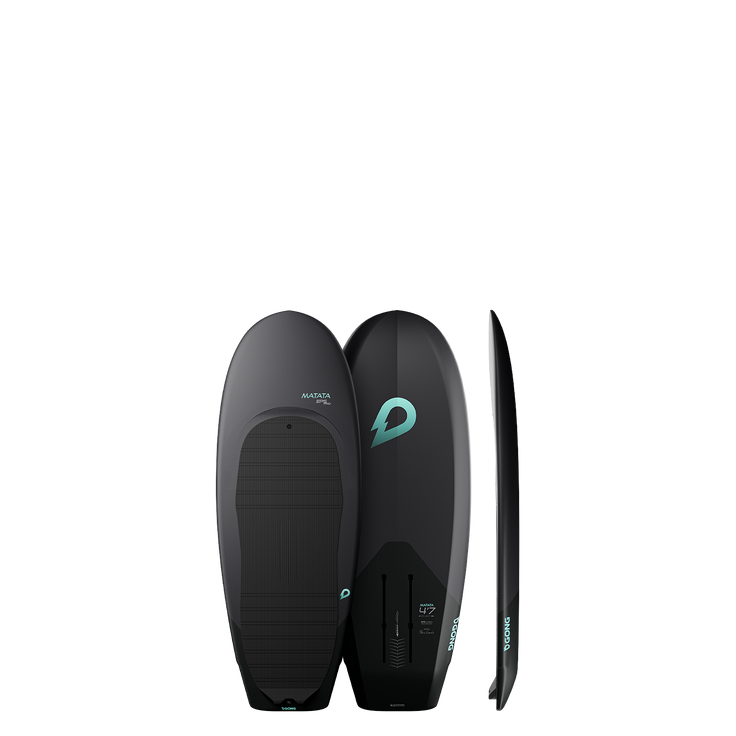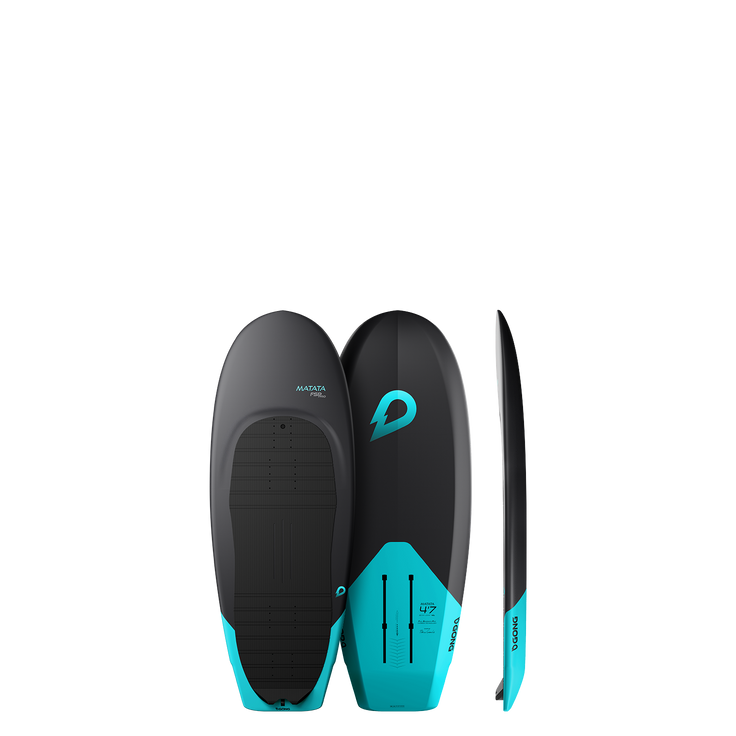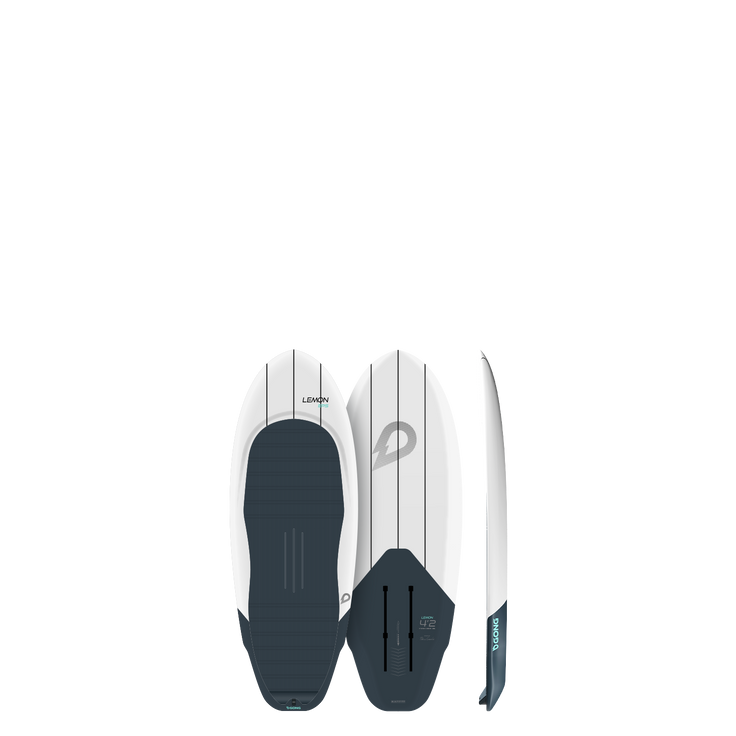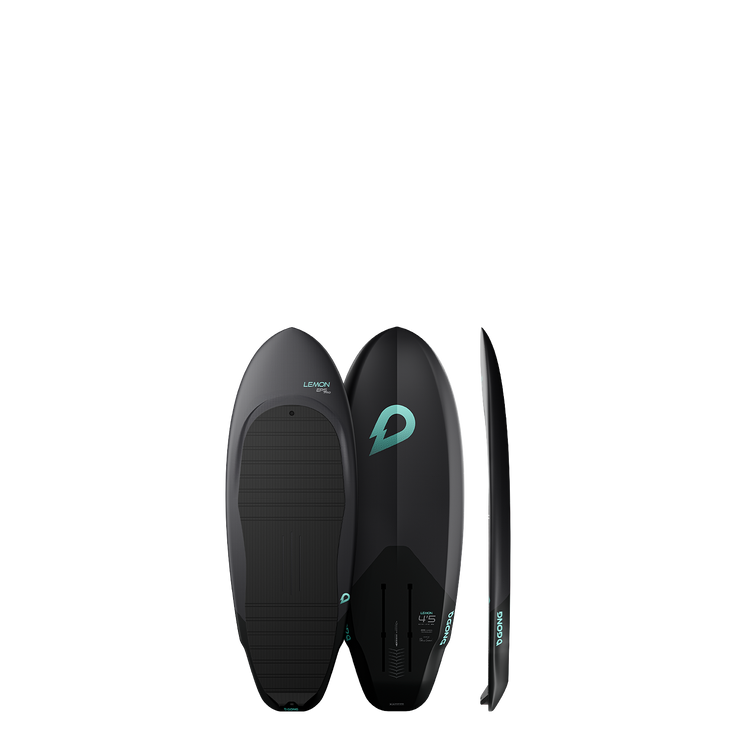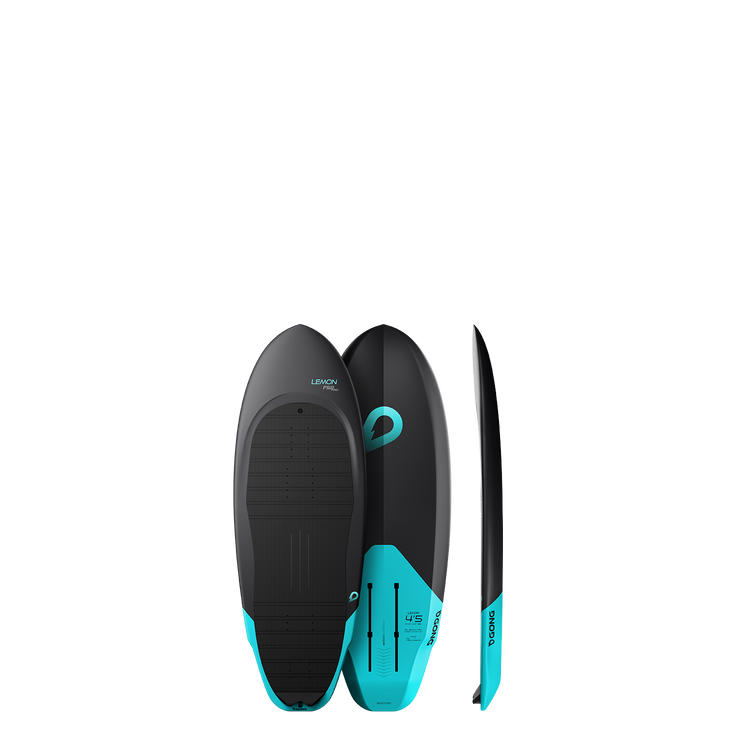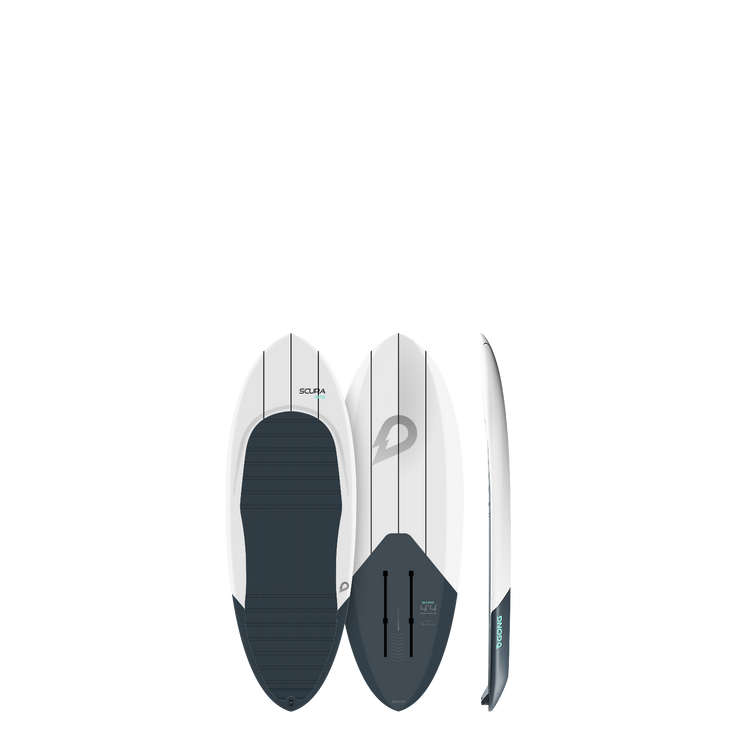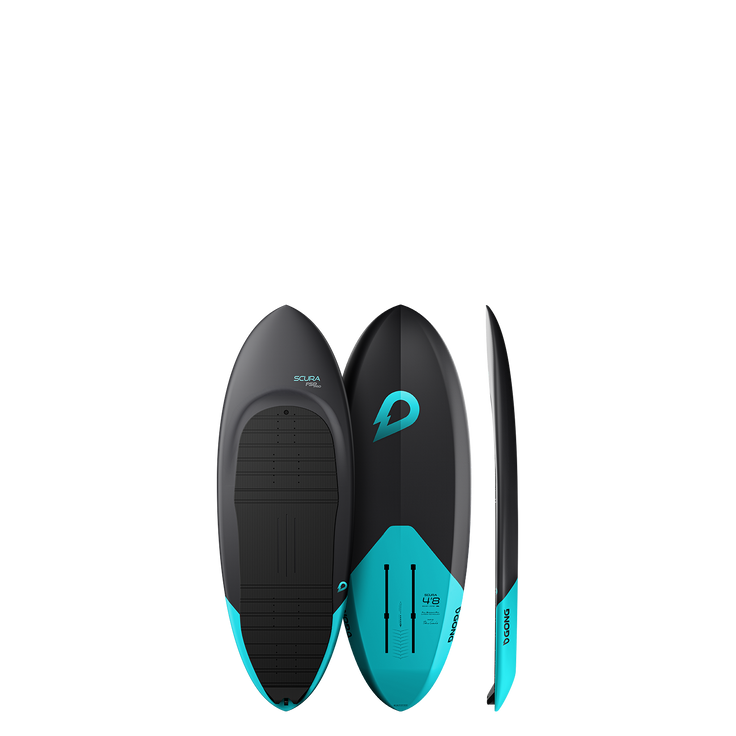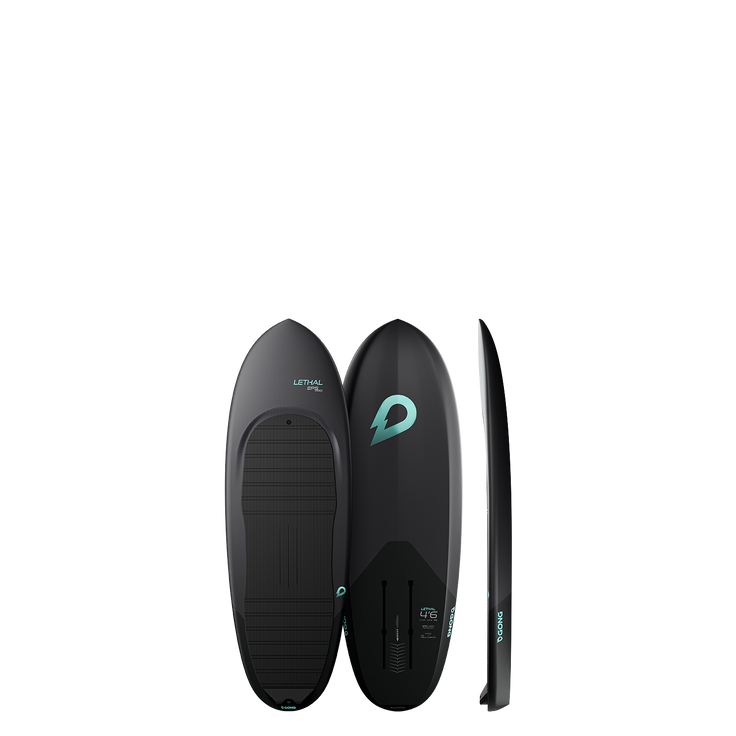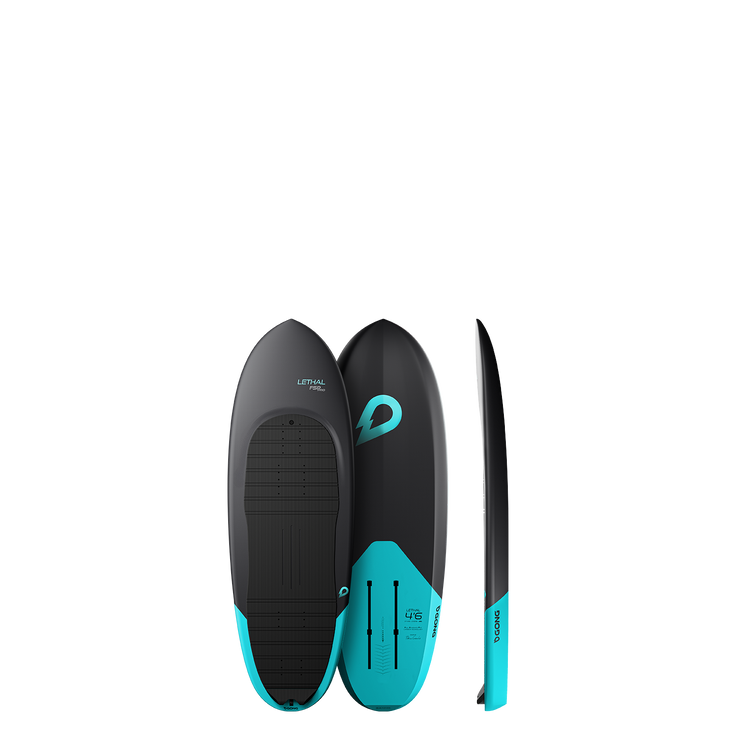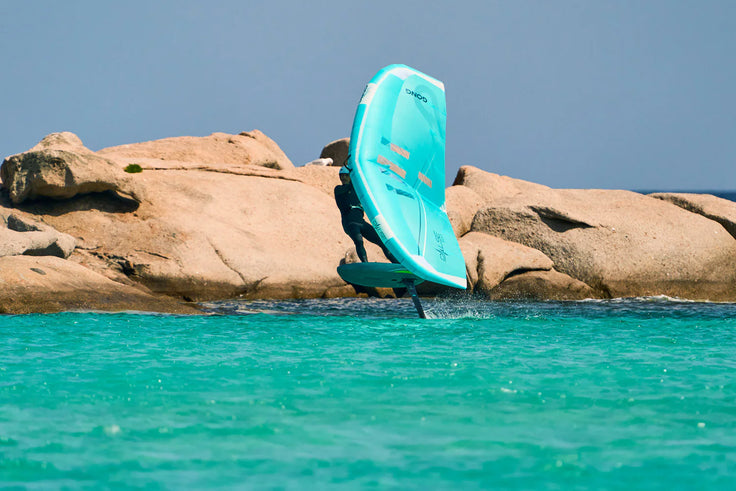TECH HIGHLIGHT: WHICH TECHNOLOGY IS THE MOST IMPACT-RESISTANT?
- News
- SUP foil
An overview from the point of view of impact resistance of all the technologies used in our surf foil boards ranges.
The number one cause of damage on a board are contacts in general, be it with the reef, other surfers or simply in the parking lot. Which means durability is essentially a matter of being cautious. Staying away from packed line-ups, as any surf foiler should do, and from rocky environments will save you visits to your favorite ding repair shop. But sooner or later, contacts will happen, so let’s see what the best options are construction wise.

Surf foiler: Arihi on a Lance EPS, HM mast and Curve H V3 setup.
FSP 2X Technology: This is the most robust option in our lineup. It’s built with a sandwich construction, which means it has multiple layers, including fiberglass and PVC high density foam. This makes it especially resistant to impacts, like hitting a rock or yourself. The sandwich structure is also watertight, so even if you manage to puncture the first layers during a big crash, the water ingress will be minimal until you can repair it. Plus, the thickness of the sandwich makes it easier to apply new layers during repairs, providing a solid base for the patch.
This technology is used for our surf kiteboards, part of our wing boards and SUP boards. Could be an option for surf foil boards in future ranges, as it was in the past.
FSP Pro Technology: This construction uses carbon fiber, which is stronger against breakage but not necessarily against direct impacts compared to fiberglass. It’s also easy to repair, thanks to the watertight nature of the sandwich construction. If you happen to damage it, you’ll have the same benefits of a minimal water ingress and a solid base for repairs.

Surf foiler: Malo, team rider GONG, with a Matata FSP Pro, an HM77 mast and Fluid H V3 with Ypra Surf-Freestyle stab foil setup.
EPS Technology: This is a classic monolithic build, reinforced for surf foil use, but it doesn’t have the sandwich structure. It’s more economical, making it a good option if you’re looking for something cost-effective, but it’s not as resistant to heavy impacts as the FSP technologies. However, it’s still robust enough for regular use.
EPS Pro (Carbon Ultra-Light Version): This version is the least resistant to impacts, as it’s focused on being ultra-light for high-performance foiling. It’s more sensitive to direct hits but offers a very responsive and lively feel underfoot.

Surffoiler: Malo, GONG team rider, on a NOTW 7’8 EPS Pro, HM77 V3 mast, front wing and Fluid H V3 stab.
If using footstraps:
Strapped airs can create heavier impacts, especially from heels, or knees and elbows when you fall hard after attempting big tricks. Therefore, footstrap inserts are only included in the FSP constructions (FSP 2X and FSP Pro). The EPS and EPS Pro versions don’t have these inserts, as they are designed to be lightweight for different use cases without the same level of impact resistance.
In short, if you’re looking for the strongest material to withstand impacts, the FSP Pro is your best bet in the current line. It provides durability and ease of repair, which is crucial for long-term use. If you have any more questions or need further details, feel free to ask!
